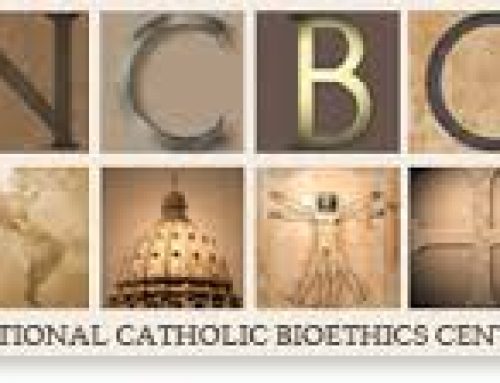Hanna-Barbara Gerl-Falkovitz* & Hans-Bernhard Wuermeling** (Germany)
———————————————————————————————————————————-
*Institut für Philosophie an der Technischen Universität Dresden (Deutschland) und EUPHRAT, Europäisches Institut für Philosophie der Religion an der philosophisch-theologischen Hochschule “Benedikt XVI” in Heiligenkreuz (Österreich).
**Institut für Rechtsmedizin der Friedrich-Alexander-Universität Erlangen-Nürnberg (Deutschland).
———————————————————————————————————————————-
No religion in the world had succeeded to overcome the mythical dread of the numinosity of nature and to gain fundamental insights to learn how to control nature – and to consider the limits of the manipulation of nature as well as of humans. It was only the liberation of humans from the uncanniness of nature, as it was described at first in Genesis 1 and then by Apostle Paul, that brought the possibility to formulate laws of nature to make nature technically controllable. One can assume (according to the philosopher Hans Blumenberg) that islamic natural science, which was leading up to the 13th century, lost its predominance due to an unsolved theological question:The exploration of natural laws, which are also respected by God, seemed incompatible with his omnipotence, which should allow him to put them out of order at any time. Since then, there have been no fundamental contributions of islamic natural science and technology towards a culture of technology. The rapid development of modern natural science and technology in all areas of research, including those concerning human beings, rather comes from the roots of European Christendom.
——————————————————
After all, it was Thomas Aquinas who differentiated – also in the 13th century – between the divine causa prima and the causae secundae, which were regarded as natural laws created by God as a reliable part of his creation. Thus Thomas Aquinas opened to the early occident – at least in theory – a nearly boundlessly liberal handling of nature, according to the mission in Genesis to explore and dominate nature.
————————————————————
The non-Christian world adopted the results of this research and the possibility to dominate nature from the heritage of European Christendom. However, in doing so, it remained blind towards the theoretical precondition that there are limits to the exploration and domination of the nature, including man, because the mission to dominate nature requires ‘shepard-like’ instead of exploitative behaviour, which becomes absolutely clear in the Book of Revelation. In addition, the mission of shepard-like care is an immediate consequence stemming from human likeness to God, which is underlined in Genesis before.
————————————————————-
There is an excellent text in the Old Testament where this change to likeness to God with its liberating consequences is described in a challenging way – in form of an unprecedented religious leap. This excellent text is almost at the beginning of the bible (Gen 1, 26-28): “Let us make mankind in our image and likeness.“ It has been shown that the Hebrew expression for image (zelem), which is used here, stands for the cult statue of god in Sumerian and Babylonian texts, but from a jewish point of view it stands for a graven image. Such a cult statue throned in a confined niche of Sumerian temples: The god really lived there, the statue was charged up with his magic presence. This interior room was inaccessible but one was able to see the numen from a distance through a number of doorways. There was only one exception: the annual celebration where the king of Babylon ‘grasped the hand’ of the god Marduk, led him through the town and exposed him to a liturgical duel – Marduk, which stands for life, fights against chaos and death. His ritualistic victory brought benison and fruitfulness to the new year. This impressive and promising cult also took place when Israel was in the Babylonian exile, during its greatest hopelessness and its foreseeable collapse within the surrounding high culture. Just at this time, a Jewish group of priests wrote the Genesis text and it was meant as a provocation to the Marduk-cult, as a liturgical ‘pièce de résistance’. This group of theologians used the word zelem, which – again from a Jewish point of view – had a definitely negative connotation, but now was newly coined to man:
Man was perceived as a “graven image” of God, like a statue as his visible image. In addition, this religious quantum leap takes place in spite of the an-iconism (“Thou shalt not make thee any graven image!”, Ex 20,4; Dt 5,8). The interdiction to use a graven image in reverse is used to affirm the only real and the only allowed image of Jahwe – namely man who was created by Him “in His image”. In more conceptual terms, the consequence to Israel’s religious leap is: There is no anthropomorphic theology but a theomorphic anthropology (U. Mauser).
———————————————————————————
Looking at it that way results in a previously unknown freedom of research, but: There are also limits to the technological dominion of nature – and of man. Those limits are set within the mission of a caring handling of the entrusted creation, in particular of man himself. However, those limits were often not transferred when the results of research and technology were adopted by non-Christian bioethics, because their preconditions were not engraved in the original culture. Technology is adopted easily, while the underlying idea of man is not.
——————————————————————————
In Christian Europe, godlikeness and the mission to protect creation gave rise to limiting consequences for science and technology – at least in theory. This can be exemplified by numerous bioethical problems, which assume a self-restriction of “making”, such as resistance against artificial fertilisation and instrumentalisation of embryos (eg. saviour siblings), the discourse on brain death, human rights etc.
————————————————————————————–
Where theologically based anthropology is unknown or where it is being denied, researchers and engineers tend to allow their actions to be limited by short-sighted consequentionalist considerations: “What is the more or less direct consequence of my actions and what limits my actions ethically?” On this basis, compromises between Christians and non-Christians can certainly be found to some degree; however, they are rather related to the pure aim of an action (preference utilitarianism) than to its theoretical basis.
—————————————————————————————-
The more questions of theoretical importance have to be considered, the more difficult those compromises will become, although it is the answer to the sense of existence (especially connected with illness and disability) that in the end determines the weal or woe of the individual and of mankind.
—————————————————————————————–
It will therefore be the challenge of the Christians in Europe at least to make the solely aim-oriented non-Christian bioethics aware of the knowledge about the godlikeness of man and the consequential self-restriction when dealing with the creation. One cannot force anyone to believe. But one can offer the underlying concept of anthropology. Those who are not too superficial will use it in case of need.
——————————————————————————————
This consciousness of the biblical roots of bioethics and biotechnology will also be a contribution of European Christendom to a new evangelisation.
——————————————————————————————
http://www.fiamc.org/agenda/conference-in-rome-bioethics-and-christian-europe/









